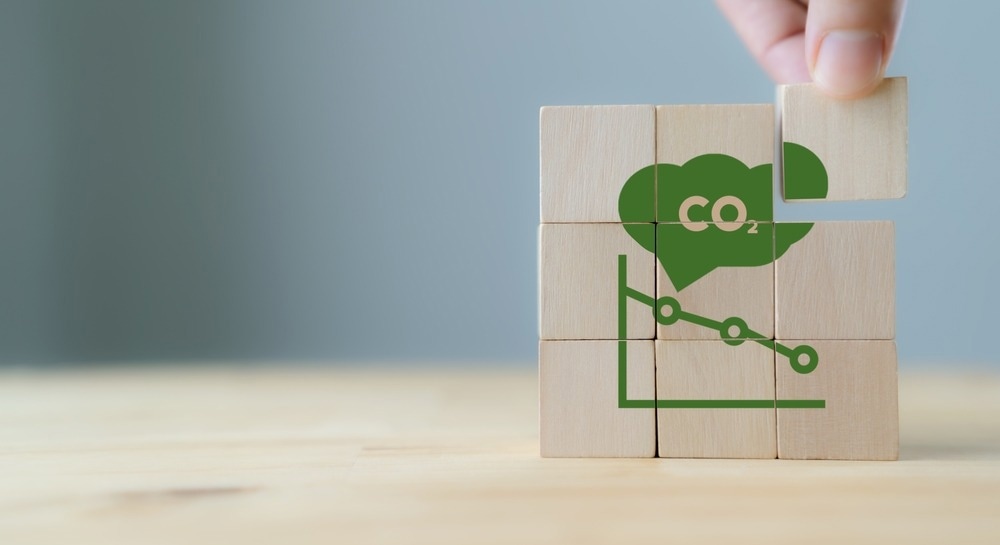Researchers from the Shanghai Advanced Research Institute (SARI) of the Chinese Academy of Sciences, under the direction of Profs. Wei Chen and Wei Wei, have developed a novel technique that effectively converts CO2 into carbon monoxide through the adsorption of low-coordination chloride ions on a silver hollow fiber electrode.

Image Credit: 3rdtimeluckystudio/Shutterstock.com
On September 3rd, 2022, the findings were released in Angewandte Chemie International Edition.
An appealing method for achieving carbon neutrality is the electrochemical transformation of CO2 into carbon-based fuels and useful feedstocks using renewable electricity. Syngas is a mixture of CO and H2 that may be immediately transformed through sophisticated industrial processes into a variety of compounds with benefits.
The primary component of syngas is CO. Therefore, one of the most promising techniques to produce products at competitive prices is CO2 electroreduction to CO.
Nevertheless, it still presents a problem with having high faradaic efficiency, a big current density, and outstanding stability for real-world applications of CO2 utilization because of the limited solubility and diffusion coefficient of CO2 in aqueous electrolytes.
In this investigation, the research group added additional chloride ions to the electrode solution on the grounds of the extremely effective electroreduction of CO2 to CO over a silver hollow fiber electrode. The electrical structure of the electrode surface was effectively controlled to prevent the side reaction of hydrogen evolution through the targeted adsorption of chloride ions.
Low-coordination chloride ion adsorption on a silver hollow fiber electrode converted CO2 to CO with a high CO faradaic efficiency (>92%) and a consistent (>150 hours) ampere-level current density (1 A·cm-2).
The heavy level of Cl- in the electrolyte might be absorbed by the surface of silver hollow fiber, according to density functional theory predictions and operando Raman observations.
This not only prevents the hydrogen evolution reaction from occurring but also improves the kinetics of CO2 reduction to CO, enhancing the efficiency of the eCO2RR even at ampere-level current densities.
In the CO2 utilization and chlor-alkali industries, this work offers a new approach for advancing the development of electrocatalytic CO2 systems with high current density, good sensitivity, and excellent durability.
Journal Reference
Li, S., et al. (2022) Chloride Ion Adsorption Enables Ampere-Level CO2 Electroreduction over Silver Hollow Fiber. Angewandte Chemie International Edition. https://onlinelibrary.wiley.com/doi/10.1002/anie.202210432